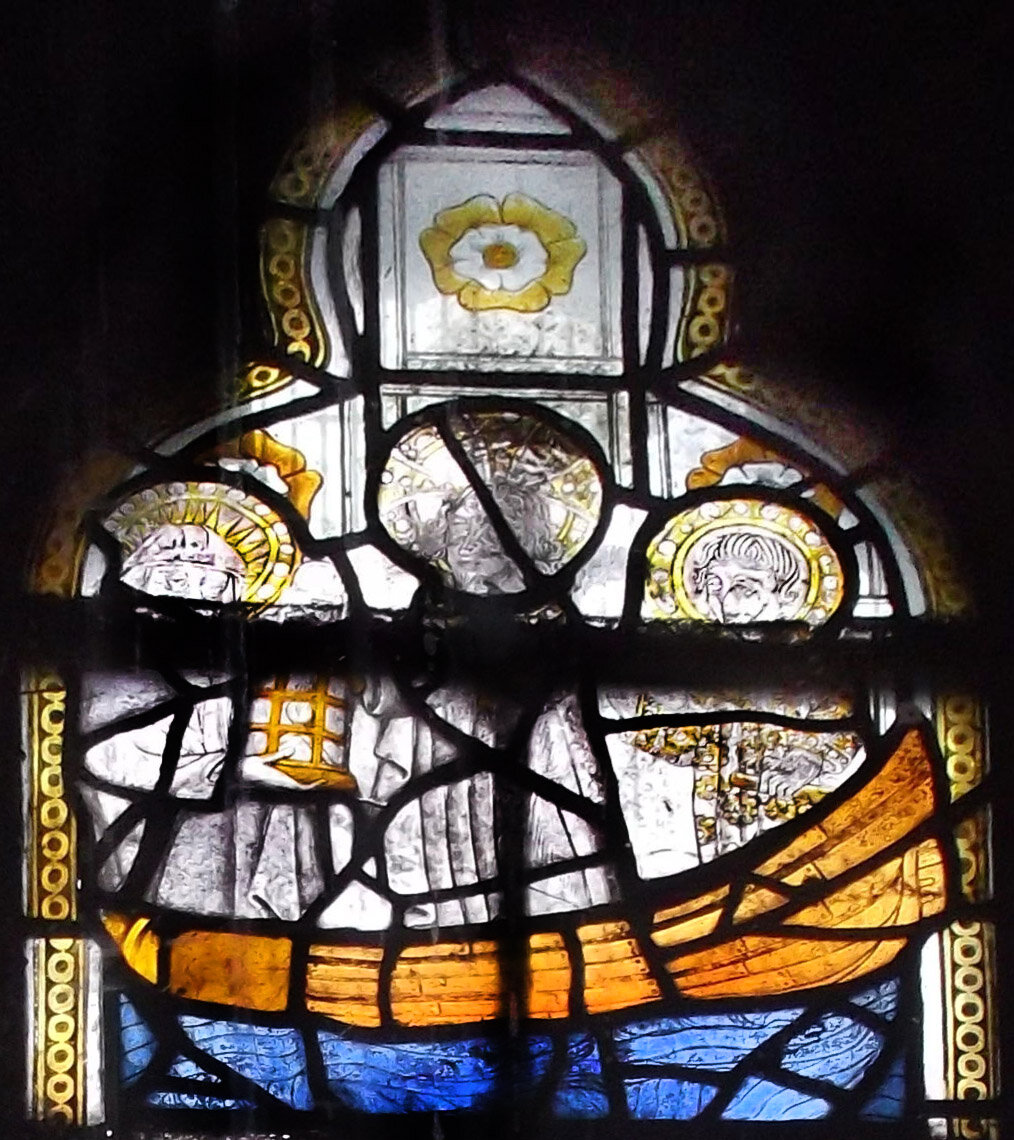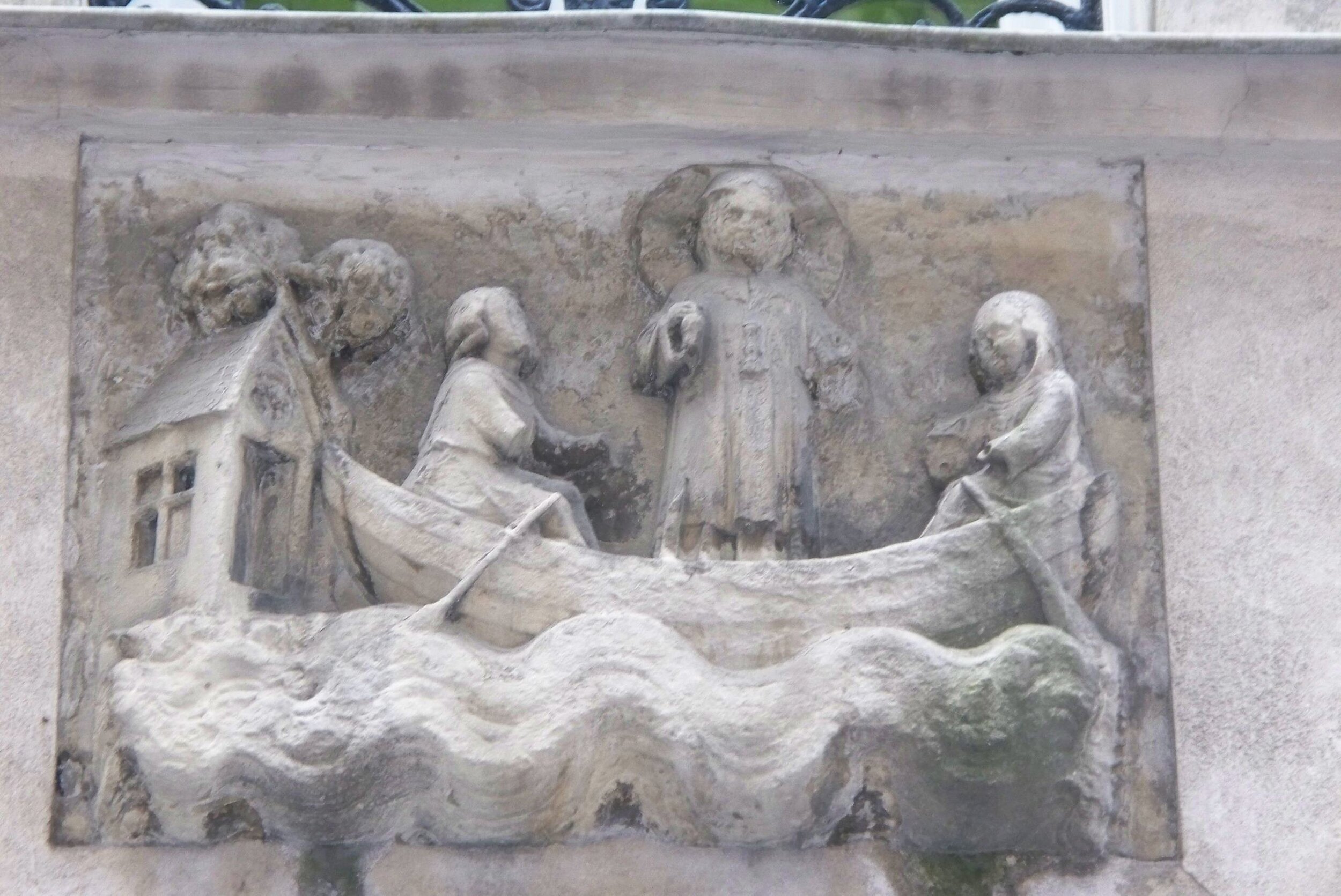Patron Saint of Ferrymen and Boatmen?
by Dr Marianne Gilchrist
St Julian window, Vestry (Photo: Jean Fenwick)
Jean Fenwick's recent presentation on the older stained glass in the Minster was fascinating! But what caught my eye was one of the small fragments of pre-Reformation glass now tucked away in the Vestry – because I think I recognise the iconography.
There are three figures with haloes in a small boat: a married woman holding a lantern; a man at the tiller; and between them a sombrely dressed figure who is larger and clearly more important – Christ, with a cruciform halo.
Similar features elsewhere
It took me back to Paris, to the Rue Galande, one of the narrow streets in the Latin Quarter that escaped Baron Haussmann's 19C redevelopment. In a wall is embedded a mediæval stone carving, of the sort that sometimes served as house-signs.
The scene is from the popular mediæval legend of St Julian the Hospitaller: there is a good introduction to the story online here, with a Middle English text. Julian's story cannot be traced back further than 12C, and seems to be a morality tale, rather than the story of a real person. Some versions place him in France, others in Italy. However, the story was retold often in art because it reflected a popular theme in mediæval piety: penance leading to redemption. A man who commits a dreadful crime (killing his parents) then serves the needy in penance, and is ultimately assured that his sins are forgiven.
Julian and his wife set up a hospice (guest-house for pilgrims) near a dangerous river-crossing, and row the ferry themselves. One day, their passenger is a leper – an outcast because of his disease – to whose every need they cater kindly. The leper then reveals himself to be an angel (in some versions, Christ himself), bringing word that Julian's penance is done and his sins forgiven.
The lantern in Julian's wife's hands is visible in the Minster window (as in the manuscript picture); unfortunately, the leading and glazing bars make it hard to see if Christ holds a leper's rattle or bell. The figures in Paris have lost their hands due to at least 600 years' wear and tear.
But why would they be in a window in Hull? Well, Julian was patron saint of ferrymen and boatmen, so would have the devotion of those who worked on the ferry crossings of the Hull and Humber; innkeepers, too, looked to him. His feast day is 12 February.




